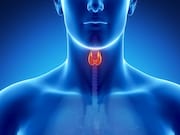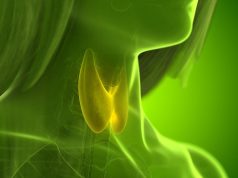Model performance had 45 percent sensitivity, 97 percent specificity, 77.4 percent overall accuracy
FRIDAY, Oct. 25, 2019 (HealthDay News) — A model developed through automated machine learning uses ultrasonographic images to classify indeterminate thyroid nodules as having low or high genetic risk, according to a study published online Oct. 24 in JAMA Otolaryngology-Head & Neck Surgery.
Kelly Daniels, from Thomas Jefferson University in Philadelphia, and colleagues conducted a diagnostic study involving 121 patients who underwent ultrasonography and molecular testing of thyroid nodules. On the basis of results of an international molecular testing panel for thyroid risk genes, nodules were classified as high- or low-risk. Thyroid nodules that were sequenced genetically for cytological results with Bethesda System categories III and IV were reviewed. The model used ultrasonographic images to classify thyroid nodules as high- or low-risk.
A total of 134 lesions were identified in 121 patients; 683 diagnostic ultrasonographic images were included. Of these, 81.4, 10.8, and 7.8 percent were used for training the model, validation, and testing, respectively. The researchers found that 56.0 percent of the nodules had no mutation, while 32.1 and 11.9 percent had a high-risk mutation or had an unknown or low-risk mutation. Overall, 33.4 and 66.6 percent of the images were of nodules classified as genetically high-risk and low-risk nodules, respectively. The model performance had 45 percent sensitivity, 97 percent specificity, 90 percent positive predictive value, 74.4 percent negative predictive value, and 77.4 percent overall accuracy.
“This preliminary study shows promise for the diagnostic applications of machine learning interpretation of sonographic imaging of indeterminate thyroid nodules,” the authors write.
Several authors disclosed financial ties to the biotechnology and medical imaging industries.
Copyright © 2019 HealthDay. All rights reserved.








